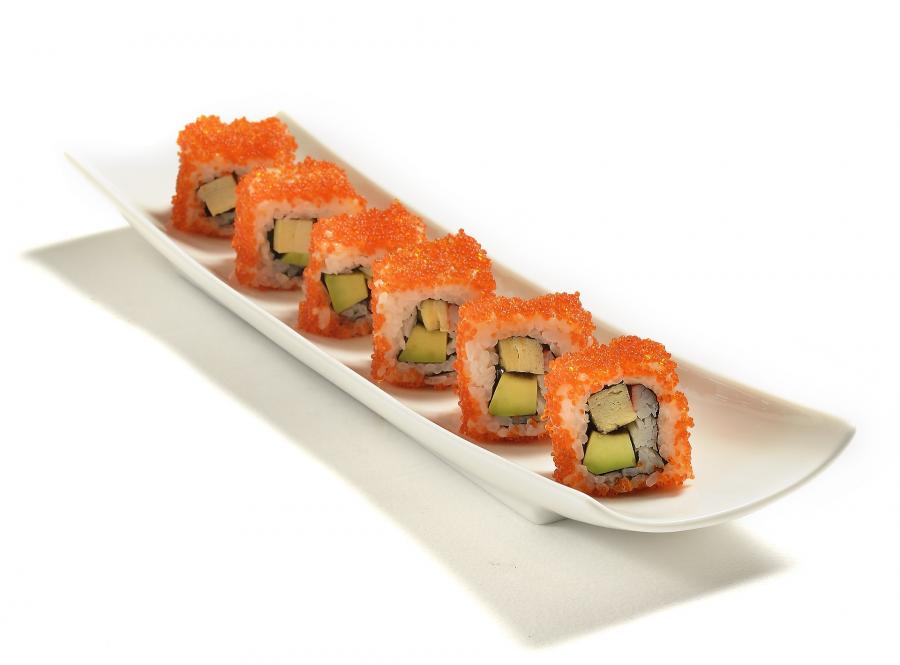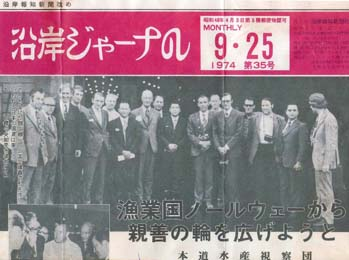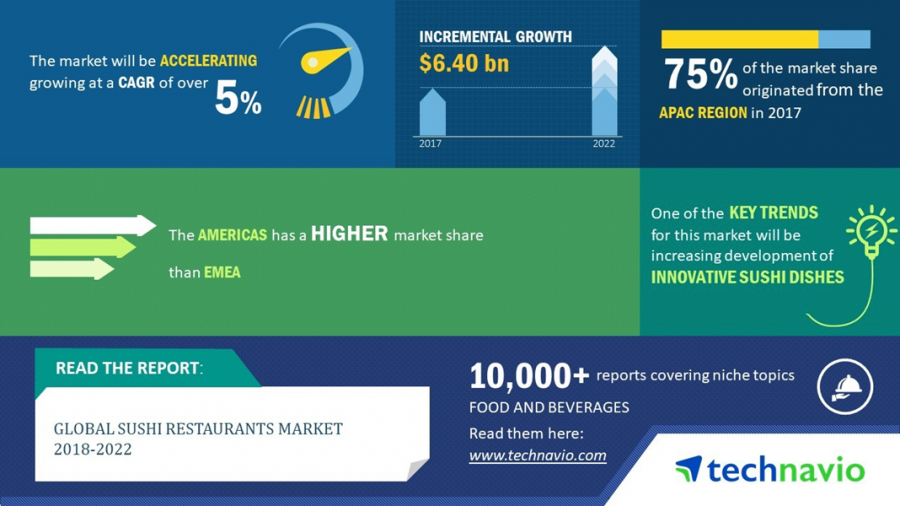
Salmon sushi is not a Japanese invention?!
The Japanese are known for their sushi worldwide. Nowadays, sushi is a typical Japanese dish that can be found all over the world. You don’t have to travel to Japan anymore to eat the best sushi in the world. However, the idea of putting raw salmon on vinegar rice for a "sake nigiri" didn't originate in Japan. The Japanese couldn't even imagine eating raw salmon before the 1990s. Is raw salmon with vinegar rice even embraced by the Japanese today? Looking back into the history of the world-famous Japanese dish leads to some unexpected realizations.
A bit of sushi history
It is generally believed that the earliest form of sushi was developed in South-East Asia in the 8th century A.D. At that time, refrigeration had not yet been invented. Locals salted their fish, wrapped it in fermented rice and left it for several months until the protein in the fish was broken down into amino acids. After that, they discarded the rice and consumed the fish, which usually remained safe to eat for several months. The Japanese liked to eat their fermented fish with a kind of steamed rice called "namanare". Namanare grew in popularity during the Muromachi period, from 1336 to 1573. It was during this period that people began to eat raw fish wrapped in rice, and eat it fresh before it loses its flavour. The emphasis shifted from preservation to a new method of combining fish with rice for consumption.
As for today, this typical Japanese dish is available for many people all over the world to try. However, the idea of consuming vinegar rice with raw fish or other toppings was not wholeheartedly embraced by Western societies at first. There were several hurdles faced by Japanese immigrants and business owners attempting to introduce sushi to Western societies.
The West's familiarization with sushi
Sushi had been introduced to the West by the early 1900s. This Japanese dish became more popular in the United States after the end of World War II. Many restaurants began experimenting with new taste combinations and sushi rolls. The idea was to help Americans get used to eating sushi. One of the rolls that became one of the most popular among Americans was the California Roll, which is an inside-out “makizushi” roll that consists of cucumber, crab meat (or imitation crab meat) and avocado, rolled in white rice.

The flavour combination was appealing to American customers. They didn’t have to be squeamish about eating raw fish because the crab meat was cooked in the roll. Americans were thus gradually getting used of the idea of consuming sushi. Eventually, they were able to try out more traditional sashimi and nigiri dishes. And just like that, sushi restaurants became a national phenomenon in the United States.
This "experimental" approach of familiarizing Americans with the taste of the California Roll first worked very well. The California Roll helped Americans to eventually become fond of Japanese sushi. This was the start of the great success story of sushi as a globalized dish. Sushi has since become a global food scape. This traditional Japanese dish got introduced to the Americans by adapting to some local familiar features, and Americans have subsequently mixed their own familiar local ingredients into it as sushi became a global phenomenon.
The succes of the California Roll is a reward of the convergence of global cultures that is brought into American society. Appadurai (1996) proposed a theory about how globalization can create transnational cultural scapes. These "scapes" create convergence in global culture; they emerge in global patterns of cultural and social behaviour and generate new dynamics of global and local culture. Globalization does not necessarily or even frequently imply homogenization or Americanization; it is the adaptation of global scapes that are enacted locally (Appadurai, 1996). Appadurai's explanation also applies to the spread of sushi to other regions of the world. He argues that various cultures and ideologies are brought into new societies and they tend to become indigenized in one way or another. Below we will discuss how Appadurai's argument of indigenization and ideology has changed the sushi culture within Japan.
The origins of salmon sushi
Raw samon was the most popular sushi topping in Japan for six consecutive years, between 2012 and 2017, according to a 2017 survey conducted by the seafood company Maruha Nichiro. This is quite a surprising fact since salmon is a relatively new addition to the Japanese sushi menu card. In fact, salmon sushi could not be found on menu cards in Japan until the 1990's. Before the 1990's, salmon was regarded as a garbage fish by the Japanese, which you only ate cured, fully pan-fried or grilled. Salmon was used to fill out cheap meals. It was never used in the traditional Edo-mae style of sushi or eaten raw because of the Pacific salmon’s tendency for carrying infections by parasites. It would have quite pretty risky to consume salmon raw before modern refrigeration and aquaculture techniques were available.
Before the 1990's, salmon was regarded as a garbage fish by the Japanese, which you only ate cured, fully pan-fried or grilled.
Japan enjoyed a self-sufficient seafood industry in the 1970’s. They produced around 7 million tonnes of seafood and consumed 60 kilograms per capita annually. In the 1980’s, this picture had changed dramatically. Japan was only self-sufficient for 50% of their seafood products, and they needed new suppliers to satisfy their huge demand domestically. Two major reasons for this development were the overfishing of their own stock due to the lack of a quota system, and the ruling of the United Nations that the Japanese were to confine their fishing to their own fishing zone and refrain from fishing in those of other nations.
Meanwhile, in the 1970’s, Norway had begun commercial salmon farming. However, they had a decreasing salmon consumption domestically. Salmon was filling their freezers across the country. Norway was looking for opportunities for a new market outside their borders by the late 1980's. Japan stood out as an ideal market for Norwegian salmon. However, they faced many challenges on their way to introduce salmon as sushi or sashimi, which could be priced up ten times higher than what was possible for the grill market.
The Norewegians' attempt to sell their salmon to the Japanese as sushi is a form of hard globalization. The Norwegian's economical motivation translated into the implementation of the consumption of raw salmon as sushi in Japanese society. For this to happen, the Norwegians first had to understand Japan's domestic market. "To succeed in the global bazaar requires a global mindset.” Thus, "Project Japan" was initiated by the Norwegians in order to learn and understand the Japanese local customs and practices.
Project Japan
Bjørn Erik Olsson, head of Project Japan, landed in Tokyo in 1986 to get a glimpse into Japanese seafood consumption habits. He knew that he had to target the raw consumption market for economic reasons. This would not be an easy task because salmon was considered a garbage fish in Japan. However, this didn't concern all types of salmon, he found. There is an indigenous type of salmon in Japan called "amago masu"; it's a red-spotted fish that only lives in the cleanest riviers. A sweet and delicious fish, amago masu is considered a delicacy by the Japanese, and they are willingly to pay good money for this type of salmon. Replacing the expensive amago masu delicacy with the cheaper Norwegian farmed salmon would enable the Norwegian seafood industry to reach out to the Japanese masses.

Apart from the highly appreciated amago masu that lives in rivers, most Japanese salmon was caught in the Pacific, where it was exposed to parasites, and therefore could not be consumed raw. Norwegian farmed Atlantic salmon was fatty and parasite-free as it was not exposed to the elements. However, Mr. Olsson knew that merely saying that Norwegian farmed salmon was parasite-free would not be sufficient to convince Japanese society to consume Norwegian farmed salmon en masse. In an interview to the NPR, he discussed how the Japanese reacted to the idea of salmon sushi.: "they [said], it's impossible. We Japanese do not eat salmon roll. They [said], it doesn't taste good. They [said] the color is wrong also; it should be redder. It has a smell. And they [said] that the head has the wrong shape."
"We Japanese do not eat salmon roll ... it doesn't taste good ... the colour is wrong also; it should be redder. It has a smell."
Mr. Olsen found out that the Norwegian embassy in Tokyo served raw salmon as a delicacy, and even Japanese visitors seemed to like it. He knew that the taste of raw salmon was not the problem per se; instead, the perception the Japanese had of raw salmon would be the biggest challenge he would have to face. Mr. Olsson used advertisements to reach out to the Japanese, to let them know that Norwegian raw salmon was healthy and tasty. However, the Japanese remained skeptic, they were not convinced right away. At the same time, Norwegian consumers turned to red meat and poultry. According to Mr. Olsen, the Norwegian seafood industry found itself “on the brink of collapse”. There was a lot of pressure to give up on the salmon sushi idea, and they were pushing Mr. Olsen to try and sell the salmon to the cheaper grill market.
But in 1992, Mr. Olsen got lucky. The company Neichirei accepted his offer to buy 5,000 metric tons of salmon for next to nothing. There was only one condition: it could only be sold as sushi. The ball started rolling for raw salmon sushi once it had arrived in the Japanese market. Japanese chefs began to endorse raw salmon with its dew, smooth texture and tasty fat. Soon enough, the Japanese people began to catch on and started to demand Norwegian salmon in restaurants across the country.
Authentic Japanese sushi
Sushi is considered to be part of Japanese identity. Adding too many extra elements to this Japanese dish will lead to it lose its cultural identity. Still, due to soft globalization, countries are redefining their interpretation of sushi. Nations are adding their own accent to the concept of sushi to make the dish taste more familiar to their local audience. They add local ingredients in small doses to preserve the overall Japanese identity of the dish within their locally-enacted sushi. The Norwegians have considered this concept when rethinking the implementation of salmon as a sushi dish. Raw salmon with vinegar rice has kept its Japanese identity; a new element has been added to sushi without leading to loss of the traditional Japanese culture traits found in the dish.
This is particularly important because sushi as a dish seems to be dominated by perceptions and enactments of "authenticity". An implicit benchmark of enoughness can be applied as to what qualifies as authentic sushi. That is, salmon sushi has to have enough of the "emblematic features" (Blommaert & Varis, 2014) that would make it be ratified as authentic Japanese sushi. A feature that defines authentic sushi, for example, is putting toppings such as vegetables or (raw) fish on vinegar rice—vinegar rice being the most defining feature of sushi. The word "sushi" actually means "it’s sour" in Japanese, which alludes to the history of fermented fish with rice being preserved in salt. Adding too many features to this concept would make it lose the authenticity that sushi is based on. Moreover, to enhance the authenticity of the dish, it should be offered in surroundings that are reminiscent of Japanese culture by displaying objects that culturally bespeak "authentic Japanese"—in the same way that green top hats, shamrock coasters and Guinness beer bespeak authentic "Irishness".
The future of sushi
The popularity of sushi seems to be on the increase due to high interest in Japanese cuisine worldwide. According to the Japanese government, there were more than 100.000 Japanese restaurants outside Japan as of October 2017. It is reported that foreign tourists who visit Japan are fuelling the rise of Japanese restaurants all over the world. The increasing demand for sushi will result in a higher number of sushi restaurants worldwide. According to Technavio, the number of sushi restaurants worldwide is going to increase by over 5% between 2018 and 2022.

An interesting part of Technavio's research is that one of the key trends in this market is the increasing development of innovative sushi dishes. Examples of innovative sushi products that currently exist are the barbecue beef roll, the Teriyaki chicken roll, the American sport roll, the Philadelphia roll and many more.
All in all, the Norwegians were thinking globally when they came up with the idea of raw salmon with vinegar rice. Motivated by hard globalization, Norwegian food culture was brought into Japanese society with the initiation of Project Japan. The Japanese have thereafter indigenized the Norwegian salmon sushi concept. They have even declared salmon their most favorite sushi topping consistently between 2012 and 2017. The Norwegians have changed the concept of sushi only slightly by adding an implicit benchmark of "enoughness" to preserve the dish's Japanese identity. Sushi restaurants all over the world have to understand and uphold this global mindset in order to be able to offer sushi that still remains "authentically Japanese" albeit globalized.
References
Appadurai, A. (1996). Modernity at Large, Cultural Dimensions of Globalization. Minneapolis: University of Minnesota Press.
April. (2018, November 19). A brief history of sushi and why its so popular today. Retrieved from Rokaakor
Blommaert, J., & Varis, P. (2014). Enough Is Enough: The Heuristics of Authenticity in Superdiversity. In: J. Duarte & I. Gogolin (eds), Linguistic Superdiversity in Urban Areas. Research approaches (pp. 144-158). Amsterdam: Benjamins.
Businesswire. (2019, October 4). Global sushi restaurants market 2018-2022 innovative sushi. Retrieved from Businesswire
Chung, W. (2017, October 23). Salmon is not a japanese invention. Retrieved from Medium
Jiang, J. (2015, September 18). How the desperate Norwegian salmon industry created a sushi staple. Retrieved from NPR
Loew, C. (2017, September 27). Salmon tops sushi survey. Retrieved from Seafoodsource
Media Digital AS. (2011, April 8). Norway’s introduction of salmon sushi to Japan. Retrieved from Norwayexports
Nippon.com. (2018, June 15). Number of overseas Japanese restaurants top 100000. Retrieved from Nippon
Perrin, C. (2015, March 15). Unique American sushi rolls. Retrieved from Sheknows
Sollesnes, O. (2018, March 10). The Norwegian campaign behind Japan's love of salmon sushi. Retrieved from Japantimes
Sushiref. (2016, October 17). The World-Wide Sushi Reference. Retrieved from Sushiref
Tappin, S., & Cave, A. (2009, March 1). Hard globalization. Retrieved from London.edu
Womack, L. (2019, September 19). Best sushi restaurants in the world. Retrieved from Thetravel